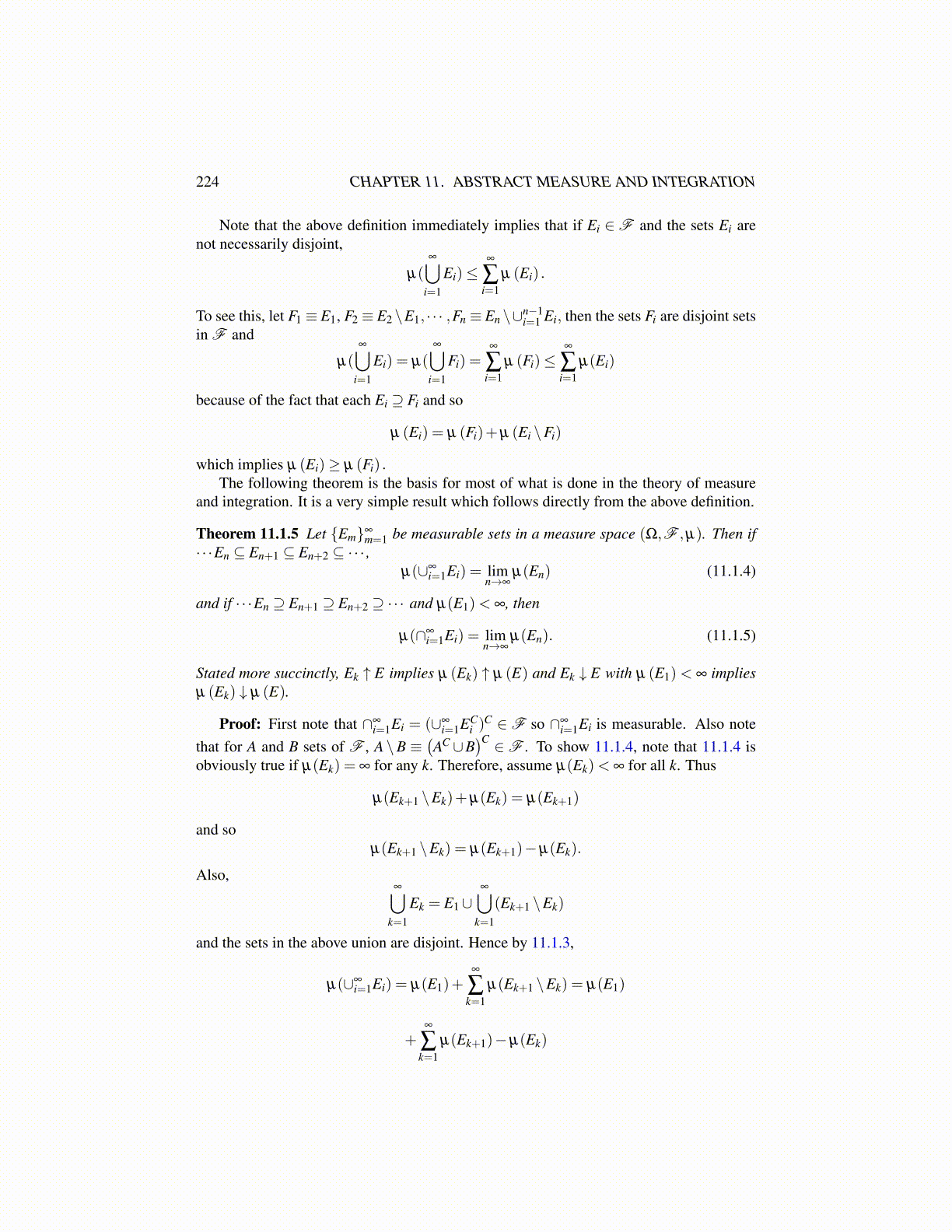
224 CHAPTER 11. ABSTRACT MEASURE AND INTEGRATION
Note that the above definition immediately implies that if Ei ∈F and the sets Ei arenot necessarily disjoint,
µ(∞⋃
i=1
Ei)≤∞
∑i=1
µ (Ei) .
To see this, let F1 ≡ E1, F2 ≡ E2 \E1, · · · ,Fn ≡ En \∪n−1i=1 Ei, then the sets Fi are disjoint sets
in F and
µ(∞⋃
i=1
Ei) = µ(∞⋃
i=1
Fi) =∞
∑i=1
µ (Fi)≤∞
∑i=1
µ(Ei)
because of the fact that each Ei ⊇ Fi and so
µ (Ei) = µ (Fi)+µ (Ei \Fi)
which implies µ (Ei)≥ µ (Fi) .The following theorem is the basis for most of what is done in the theory of measure
and integration. It is a very simple result which follows directly from the above definition.
Theorem 11.1.5 Let {Em}∞m=1 be measurable sets in a measure space (Ω,F ,µ). Then if
· · ·En ⊆ En+1 ⊆ En+2 ⊆ ·· · ,µ(∪∞
i=1Ei) = limn→∞
µ(En) (11.1.4)
and if · · ·En ⊇ En+1 ⊇ En+2 ⊇ ·· · and µ(E1)< ∞, then
µ(∩∞i=1Ei) = lim
n→∞µ(En). (11.1.5)
Stated more succinctly, Ek ↑ E implies µ (Ek) ↑ µ (E) and Ek ↓ E with µ (E1) < ∞ impliesµ (Ek) ↓ µ (E).
Proof: First note that ∩∞i=1Ei = (∪∞
i=1ECi )
C ∈F so ∩∞i=1Ei is measurable. Also note
that for A and B sets of F , A \B ≡(AC ∪B
)C ∈F . To show 11.1.4, note that 11.1.4 isobviously true if µ(Ek) = ∞ for any k. Therefore, assume µ(Ek)< ∞ for all k. Thus
µ(Ek+1 \Ek)+µ(Ek) = µ(Ek+1)
and soµ(Ek+1 \Ek) = µ(Ek+1)−µ(Ek).
Also,∞⋃
k=1
Ek = E1∪∞⋃
k=1
(Ek+1 \Ek)
and the sets in the above union are disjoint. Hence by 11.1.3,
µ(∪∞i=1Ei) = µ(E1)+
∞
∑k=1
µ(Ek+1 \Ek) = µ(E1)
+∞
∑k=1
µ(Ek+1)−µ(Ek)